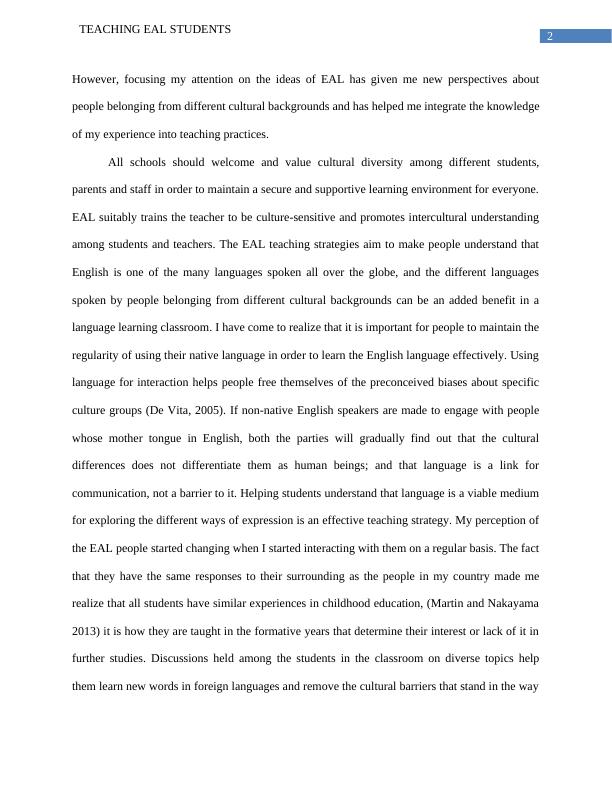Teaching EAL Students
Write a reflective essay on the intercultural aspects of teaching and learning, the role of family and community in shaping students' language learning, and the role of the teacher when planning to teach and assess EAL/D learners. The essay should be structured using an academic writing style.
10 Pages2558 Words418 Views
Added on 2023-04-21
About This Document
This assignment reflects on observations and experiences in teaching English as an Additional Language (EAL) students, focusing on intercultural aspects, the role of family and community, and effective teaching strategies. It discusses the importance of intercultural interactions in eliminating stereotypes and enhancing progress in the learning process. It also highlights the integral role of family and community in the learning process and provides pedagogical strategies for developing the speaking and listening skills of EAL learners. The assignment concludes by emphasizing the need for collaborative and interactive teaching strategies and verified pedagogical methods for EAL students.
Teaching EAL Students
Write a reflective essay on the intercultural aspects of teaching and learning, the role of family and community in shaping students' language learning, and the role of the teacher when planning to teach and assess EAL/D learners. The essay should be structured using an academic writing style.
Added on 2023-04-21
ShareRelated Documents
End of preview
Want to access all the pages? Upload your documents or become a member.
Experience of Learning English Language - Report
|7
|1687
|106
EAL Learning: Analyzing the Application of English as Additional Language (EAL) in a Case Study
|6
|1061
|326
EAL/D Teaching Plan
|6
|1578
|218
Intercultural Psychology: Learning Spanish Language and Culture
|4
|748
|362
Importance of English as a Second Language
|8
|1844
|86
Importance of Multilingualism in Education Studies
|14
|4349
|242



